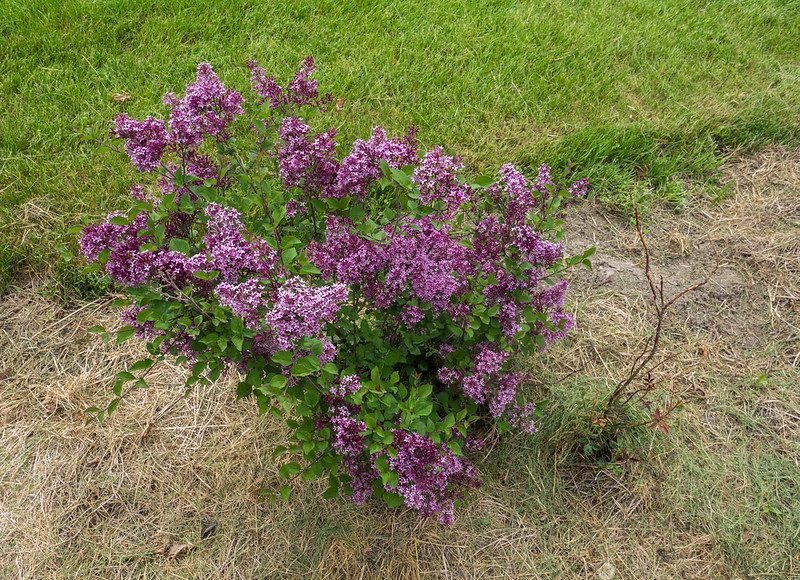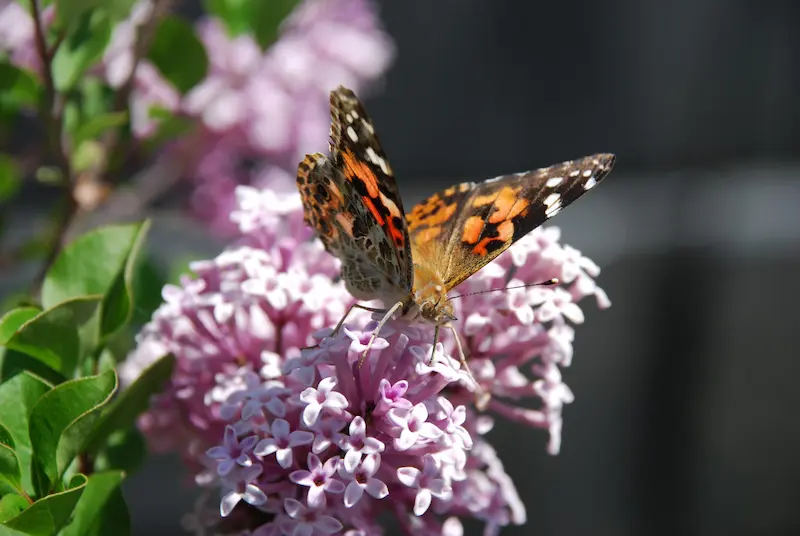Lilac types- Plant of the Month
Lilacs are one the great Ottawa landscape plants! There are many reasons to love them with their sweet perfume and those beautiful amethyst – hued blooms that butterflies adore. Not only do they grow most anywhere there is lots of sun, they are generally tough as nails, require no maintenance and have relatively few insect or disease problems. For more on lilac care, click here.
Preston Lilac
If you are shopping for a lilac shrub, consider the Preston Lilac ‘Miss Canada’– developed right here in Ottawa at the Experimental Farm. These lilacs are distinguished by their late season of flowering (early June) which follows the more common May-blooming French lilacs. At maturity, this lilac will grow to be around 10 feet tall and 8 feet wide. It is a bit leggy, has a medium growth rate, and a life expectancy of 30 years.
Quick Growing Guide
Botanical Name: Syringa
Genus: Syringa
En français: Lilas
Blooms:
Sun / Shade:
Water: If it gets very dry, give a thorough soaking with a hose
Pollinators:
Care:

Courtesy: F. D. Richards from Clinton, MI, CC BY-SA 2.0 https://creativecommons.org/licenses/by-sa/2.0, via Wikimedia Commons
Bloomerang Lilac
Another terrific option is Bloomerang Lilac which first blooms in late May, takes a short break in June, and then starts up again in July to September. Its flowers are a pretty shade of pale purple that deepens a bit during the second re-bloom. And while the common French lilacs can grow into large, lanky shrubs over 10’ tall, Bloomerang stays a more compact 4-5’ tall.

by F. D. Richards is licensed under CC BY-SA 2.0.
Dwarf Korean Lilac
A third option to consider is the Dwarf Korean Lilac Standard – a tree form of the lilac shrub which grows about 6-8’tall on a slender tree stem. These lilacs are best when under planted with shorter shrubs or perennials to create a ‘layerd’ effect. With their globe of pinkish-purple blooms, the dwarf lilac tree makes an excellent landscape feature plant or focal point in a butterfly or hummingbird garden.

Credit: Iridium135, CC BY-SA 3.0 http://creativecommons.org/licenses/by-sa/3.0/, via Wikimedia Commons
The two most common mistakes I see when it comes to lilacs are location and pruning. First and foremost, if they don’t get enough sun, they’ll simply grow leaves and refuse to flower. The second issue comes from pruning. Since lilacs form their flower buds in the summer, pruning in the fall or in the spring will eliminate the May/June floral display. Pruning is rarely required, but if you feel you must, be sure to do it immediately after the lilac blooms have faded in June.







Leave a Reply
You must be logged in to post a comment.